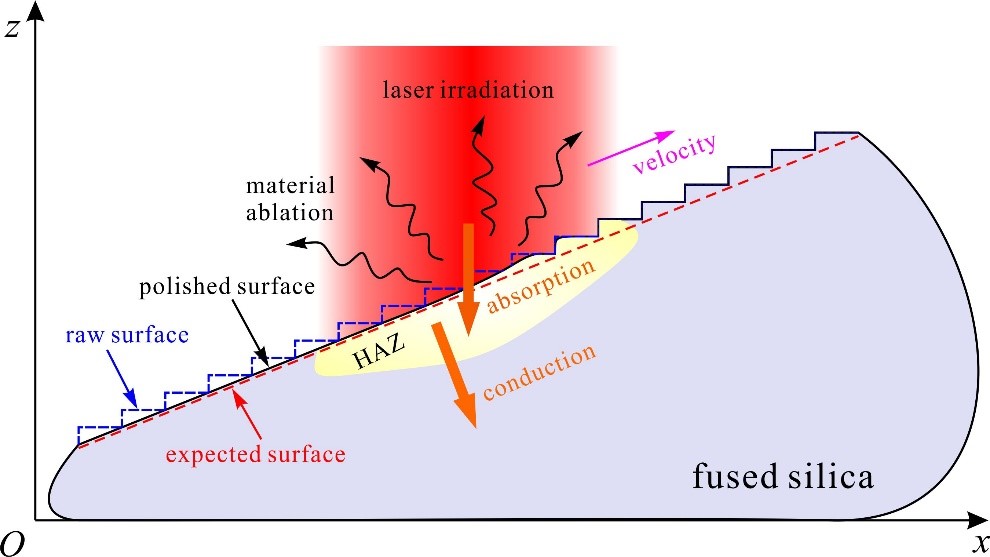Fused silica is a significant material for numerous applications in optics and photonics, owing to its excellent optical performance, e.g., high laser damage resistance, tiny optical loss ranging from near infrared to ultraviolet and excellent chemical and mechanical stability. The processing of fused silica with pulsed CO2 laser ablation offers the opportunity of converting an arbitrarily etched stepping structure into a continuous one. However, the achievement of continuous optical surfaces with the highest precision by laser-pulse ablation requires a balance of several parameters. An analytical model developed by Nowak et al. can be used as a guide for parameter selection in CO2 laser ablation of fused silica while comprehensively predicting the morphology of a polished workpiece remains highly difficult.
In order to rapidly obtain the optimum parameters for state-of-art polishing, a research group from Shanghai Institute of Optics and Fine Mechanics (SIOM) of the Chinese Academy of Sciences (CAS) had recently developed a numerical model based on the finite-element method for predicting the morphological evolution of a stepping structure on fused silica under different CO2 laser heating conditions. Their findings were published in Materials.
In the experiment, the simulation focused on the non-explosive laser ablation with laser intensity in the regime of ~0.1-1MW/cm2, where material removal by evaporation dominated, and uncontrollable melt displacement and ejection were avoidable. Thus, the critical temperature of surface recession was the vaporization threshold of fused silica at normal atmospheric pressure. According to Hertz-Knudsen-Schrage formula, the velocity of surface recession could be calculated from the absorbed laser irradiation, the density of the material and total change of enthalpy required to volatilize the material. Furtherly, the comprehensive surface deformation of a stepping structure on fused silica could be calculated under different parameters based on the finite-element method.
Comparatively, it was preferable to acquire a polished profile that was closer to the expected one with less material loss. Using the numerical model, the researchers obtained the optimum parameters for polishing the stepping structure on fused silica after a comparison of the predicted surface morphologies under different heat conditions.
Adopting the optimized parameters acquired from the numerical model, a typical cone-shaped stepping structure with a diameter of 2 mm and a slope angle of 10.4° was processed via CO2 pulsed laser ablation experimentally. The morphology of the processed structure was observed and characterized, and the measurements were in good agreement with the predicted values.
These results indicate that the numerical model can simulate morphological modification of CO2 laser ablation with a high degree of reliability. It could further be used to optimize processing parameters for customizing continuous fused silica surfaces, which could facilitate industrial manufacturing of freeform optics.
This work was supported by the Science and Technology Commission Shanghai Municipality.

Figure 1. Schematic diagram for 2D numerical model of CO2 laser ablation (Image by SIOM).
Figure 2. Morphological evolution and temperature profile during the ablation process (Image by SIOM).
Article website:
https://doi.org/10.3390/ma12244109
Contact:
Mr. CAO Yong
General Administrative Office
Shanghai Institute of Optics and Fine Mechanics, CAS
Email: caoyong@siom.ac.cn